Enigmatic figures appear in a succession of poetic poses across 13 large canvases. Sometimes separate and at other times touching, the works are part of a series of oil paintings by German painter Georg Baselitz, unveiled at the recently reopened Gagosian Gallery in Hong Kong.
Titled “Years Later,” the exhibition of the artist’s latest work showcases a motif that he’s long been recognized for: inversion. For the past five decades, the 82-year-old has subverted traditional depictions of the human form by turning his figures upside down.
Inversion, which helps to slow down the processes of creating and comprehending a work, is, to Baselitz, part of his legacy – a model he remains “devoted” to and something that viewers have, over the years, come to expect.
“The audience has grown to accept that it’s something I’ve done to expand the medium of painting,” the artist said in an email interview.
He continues to advance his signature motif in his latest paintings by using “contact-printing,” a labor-intensive technique that involves transferring an image from one wet canvas to another.
The first canvas is painted black, while the second is painted gold around stencils of human figures. Then, the two are pressed together with varying degrees of pressure. One canvas is pulled away and discarded, yielding a single painting. Softened brushstrokes and smudges of paint materialize; parts of the images are more defined or faint depending on the weight of the transfer.
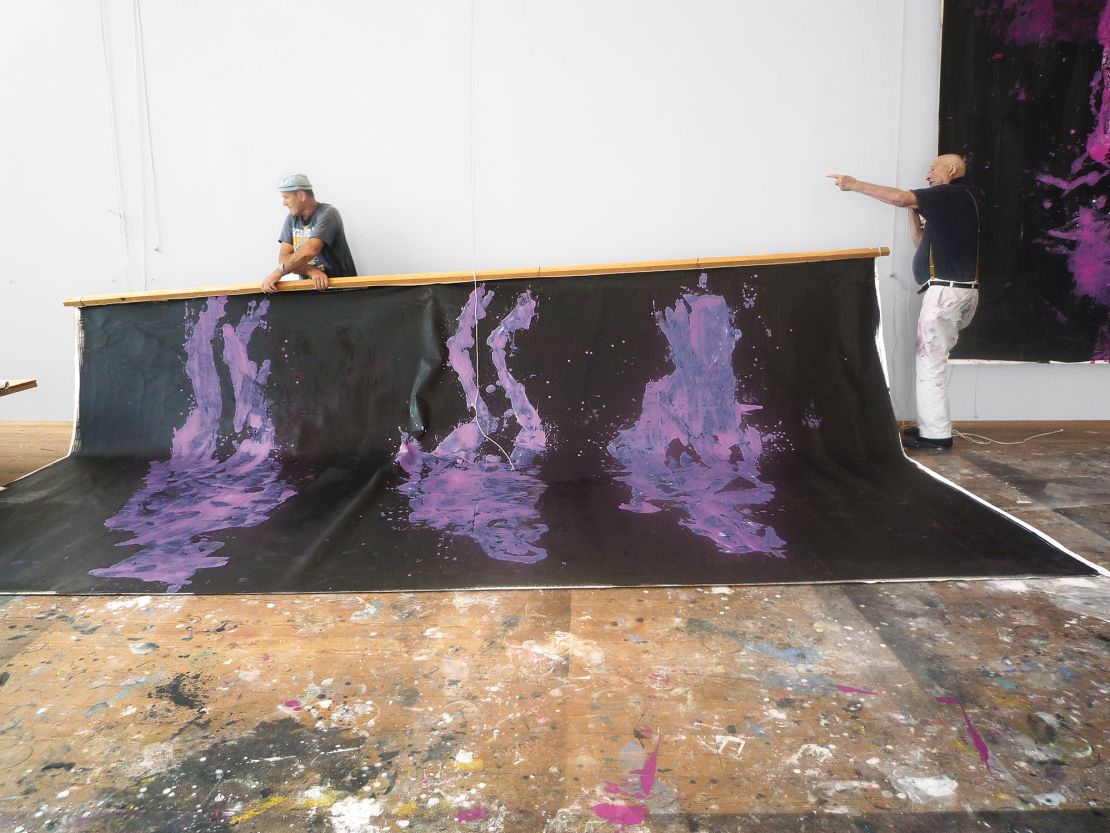
“Unlike many contemporary artists, who are looking for that machine-like finish (or) who are looking to remove the artist’s hand, that’s not what Baselitz is after,” said Nick Simunovic, director of the Gagosian Gallery in Hong Kong. “There’s a lot of chance and disorder. An element of surprise is invited into the production process.”
Baselitz points to the use of contact-printing by some of the world’s greatest artists.
“There are many examples (of this method) in art history: Degas, Dali and Warhol,” he said. “The work of art, created with this technique, gives the impression that God has had a hand in it.”
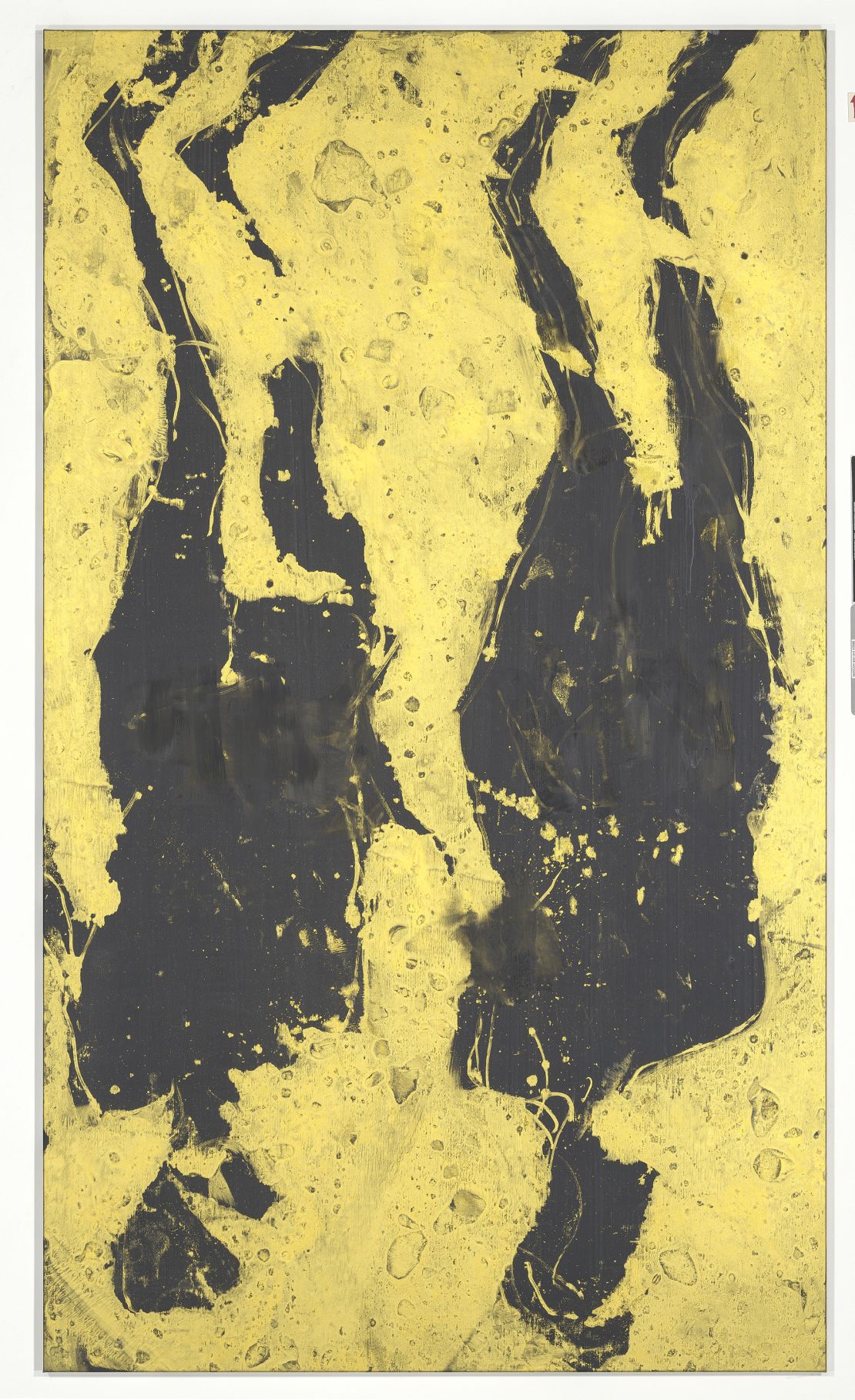
Taken as a whole, the figures in “Years Later” have a fleeting, echo-like quality about them. Based on a set of nude Polaroids of the artist’s wife, Elke, from 1974, the paintings are sentimental depictions of the couple’s enduring love. Some of the works show the artist’s figure tenderly reaching over to touch his wife’s forearm.
According to Simunovic, Baselitz is less interested in looking forward. “He kept this material (the Polaroids) for more than 40 years before revisiting it.
“He’s much more interested in looking back and looking for things to re-contextualize.”
Early years
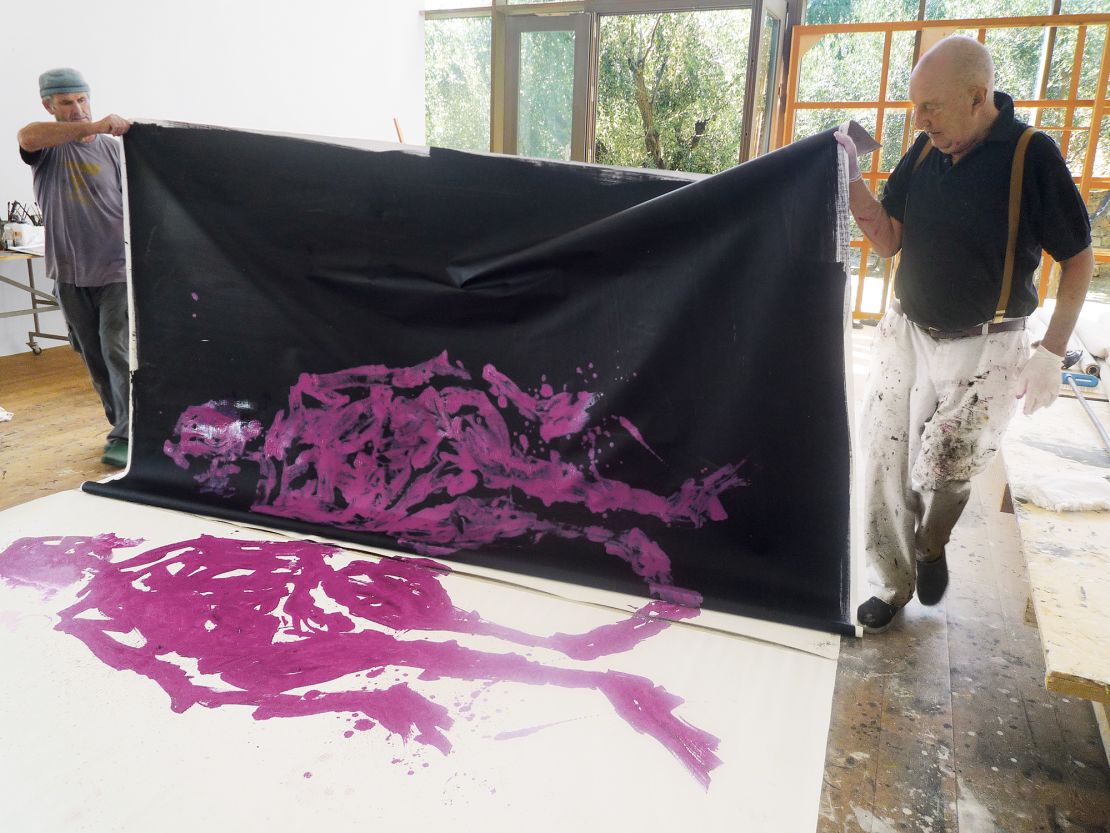
Experimentation has always been important to Baselitz – as has rejecting the status quo.
Born in 1938 as Hans-Geog Kern, he grew up amid the devastation and aftermath of World War II. In 1957, he was expelled from art school in East Germany for “socio-political immaturity,” and, at one point, refused to work at an industrial site in Rostock – something that was expected of students in the communist territory.
During his postgraduate studies in West Berlin, Baselitz looked to the early German Expressionists’ use of primitive sources – such as folk art, children’s art, art of the mentally ill – for inspiration. He wrote a manifesto, “Pandemonium” (1961, 1962), about his frustration towards working in post-war Germany, which he believed was “re-building too quickly,” according to Simunovic.
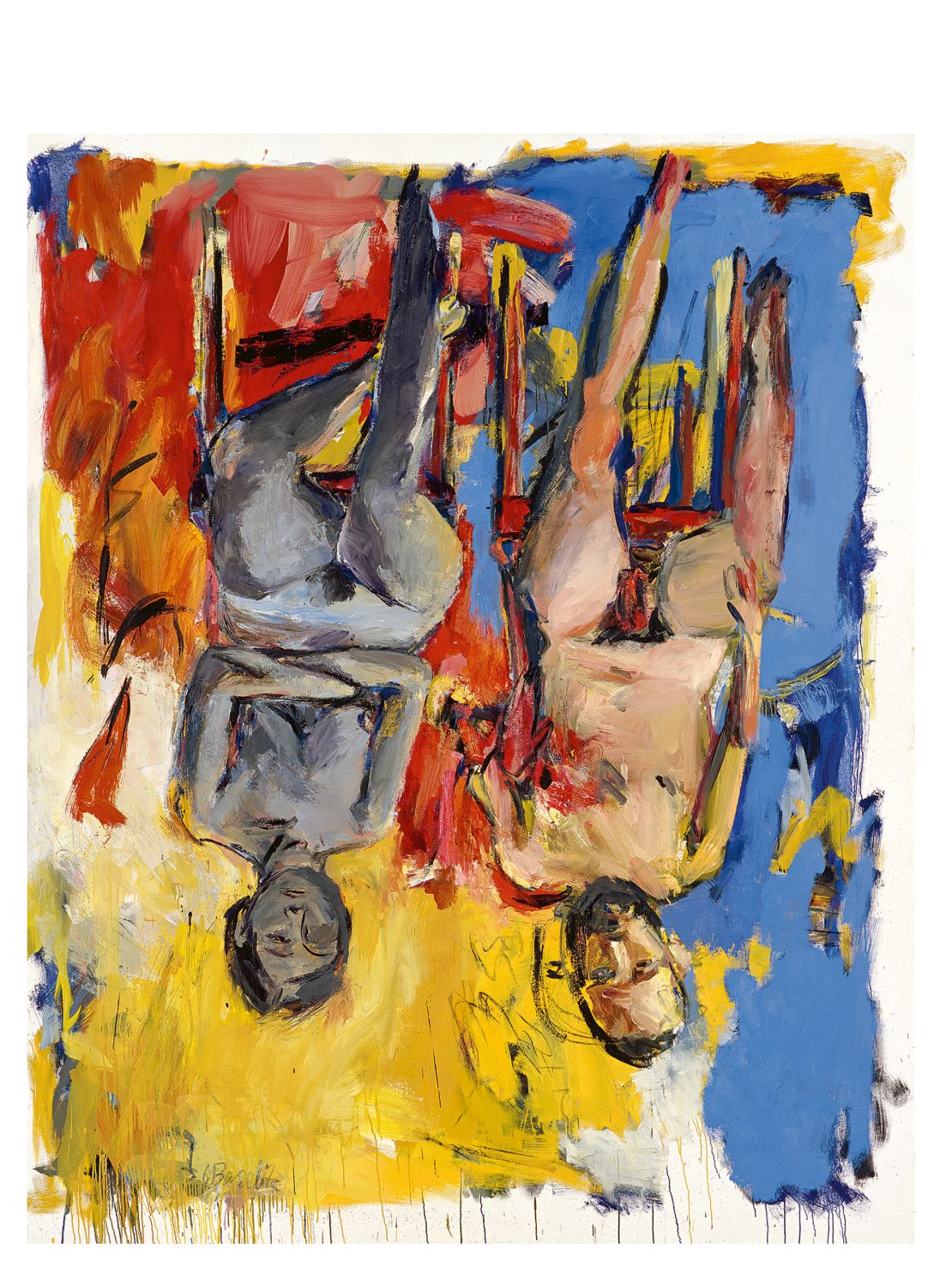
Baselitz’s figures were sometimes crude and controversial. In 1963, his painting of a boy holding a giant phallus, “Die große Nacht im Eimer” (“The Big Night Down the Drain”), was confiscated on the grounds of being “obscene.” The painting was eventually returned to the artist after a lengthy trial.
In 1969, Baselitz began experimenting with inverted portraits of his wife and friends, as well as landscapes. “It was obvious that he was trying to frustrate the viewer’s perception,” Simunovic said of Baselitz’s “radical rejection of painting.”
“In a way, it was making the work abstract.”
His gestural brushstrokes and expressive color would make him one of the pioneers of Neo-Expressionism in Germany, part of an international movement that took hold in the 1980s and included Baselitz’s compatriot Anslem Kiefer, whose haunting works tackled the country’s Nazi history.
Around this time, Baselitz began experimenting with sculpture, presenting a seated figure of painted wood at the 1980 Venice Bienniale that became provocative when its outstretched arm was interpreted as a Nazi salute. He has also been known to revisit earlier works, starting a series in the 2000s called “Remix Paintings” that featured new interpretations of some of his most contentious works, including the previously confiscated “Die große Nacht im Eimer.”
Re-opening in a pandemic
“Years Later” is the first new exhibition to open at any of the Gagosian galleries worldwide since the coronavirus pandemic wreaked havoc on show schedules.
For many museums and galleries, it has been impossible to delay exhibitions due to crowded timetables and the additional costs of insuring and loaning artworks from collectors and other institutions. A recent report from the International Council of Museums found that 13% of museums worldwide may permanently shut as a result of Covid-19.
According to the report, the pandemic may have a particularly dire effect on art institutions across some African and Arab countries, where cultural sectors are “still fragile.”
Some curators have spent months, or even years, preparing for shows that will never materialize. But according to Simunovic, Gagosian has been well-positioned to weather the public health crisis.
“The only (Hong Kong) exhibition we’ve had to cancel or postpone was during (the Hong Kong edition of) Art Basel. But beyond that, the exhibitions that came before and after have happened,” he said. “Gagosian has been actively and successfully showing work online, but like all galleries and museums, we look forward to some sense of normalcy.”
The precautions taken at the Hong Kong branch add an eerie dimension to the visitor experience. Attendees are required to sign a health declaration form and have their temperature taken upon arrival. They also must wear masks throughout the exhibition space.
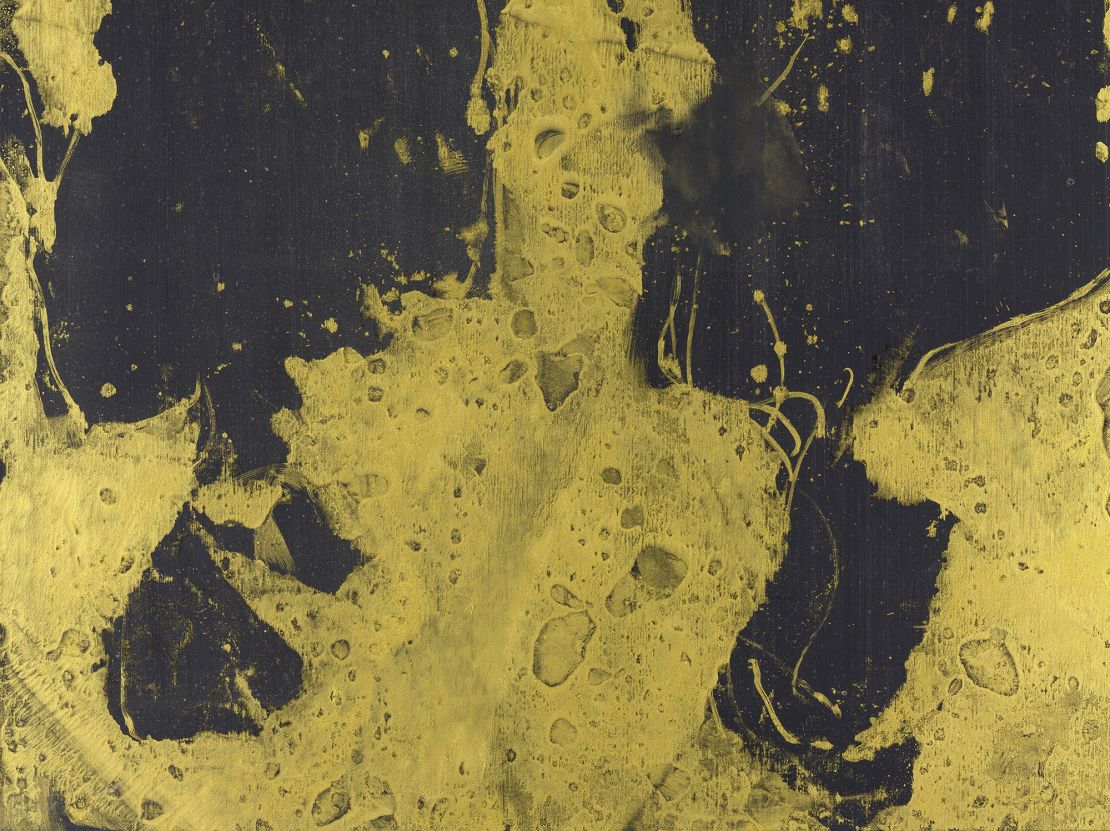
But Simunovic said Baselitz was pleased that people could view his work in the flesh, especially after learning that his first major retrospective in Paris’ Centre Pompidou has been pushed to next year.
“He’s thrilled that an art-loving audience can come into contact with his work again.”
“Years Later” is showing at the Gagosian in Hong Kong until August 8.
Gagosian galleries in Paris, London and Rome have now re-opened. Other locations are still closed or open by appointment.
